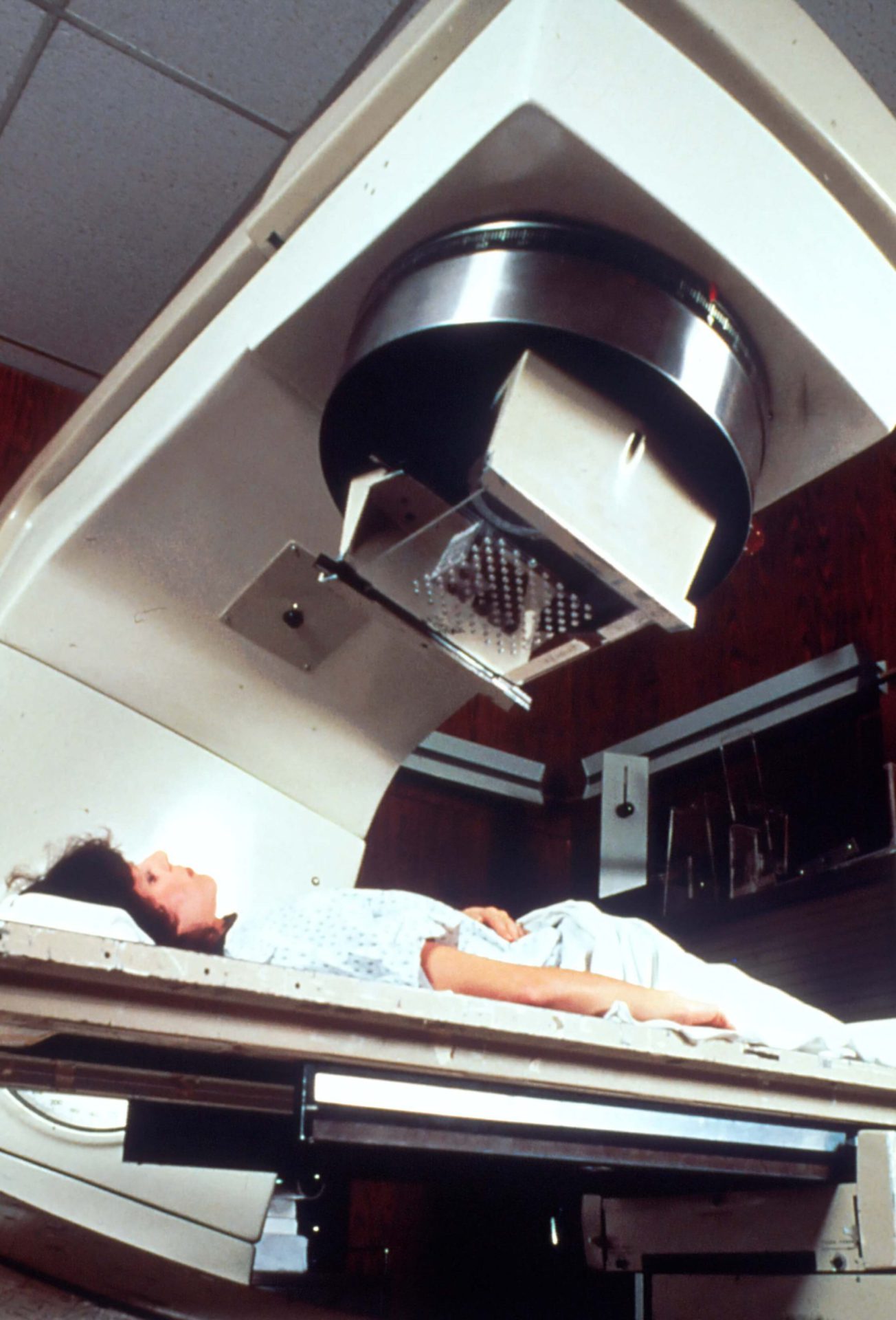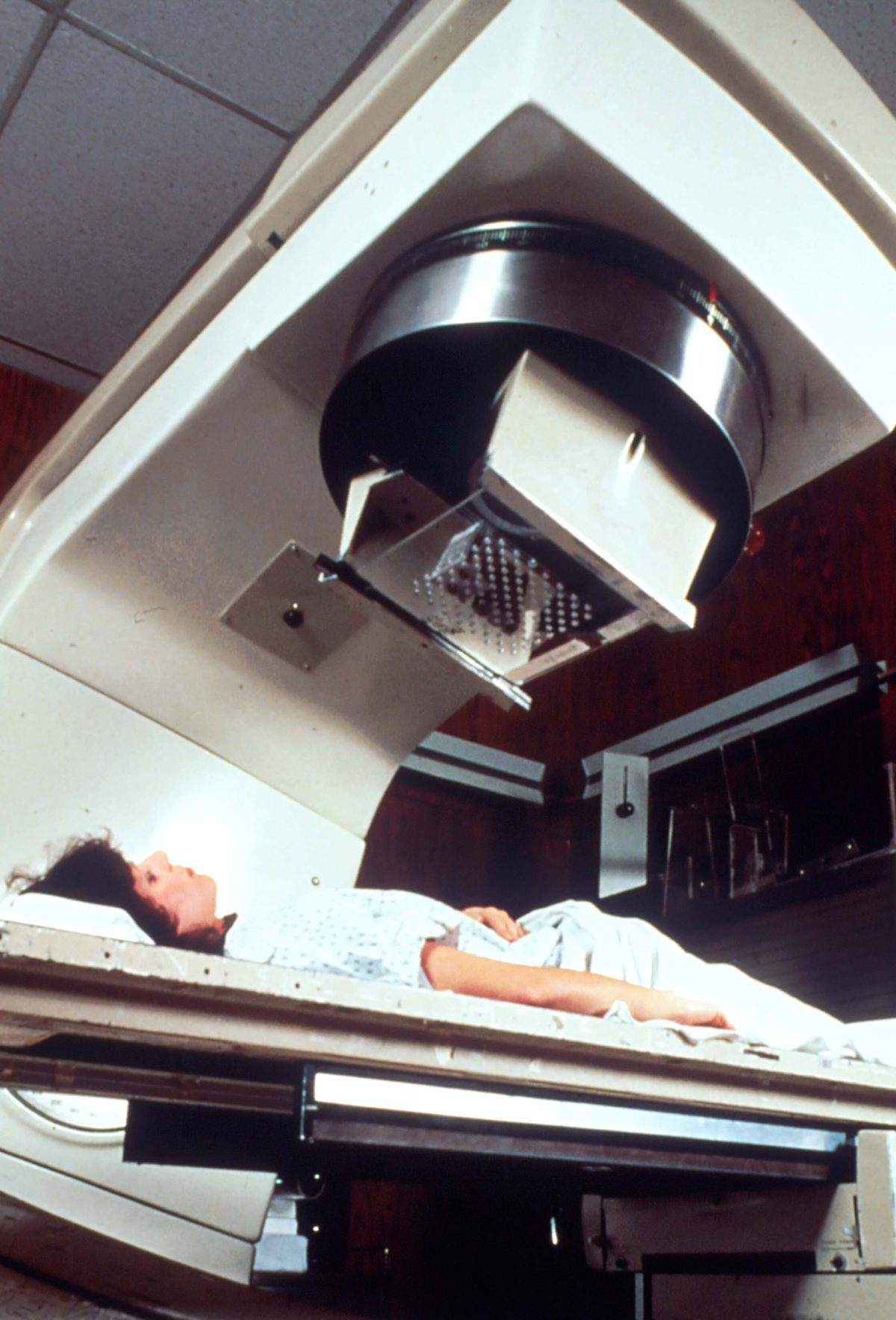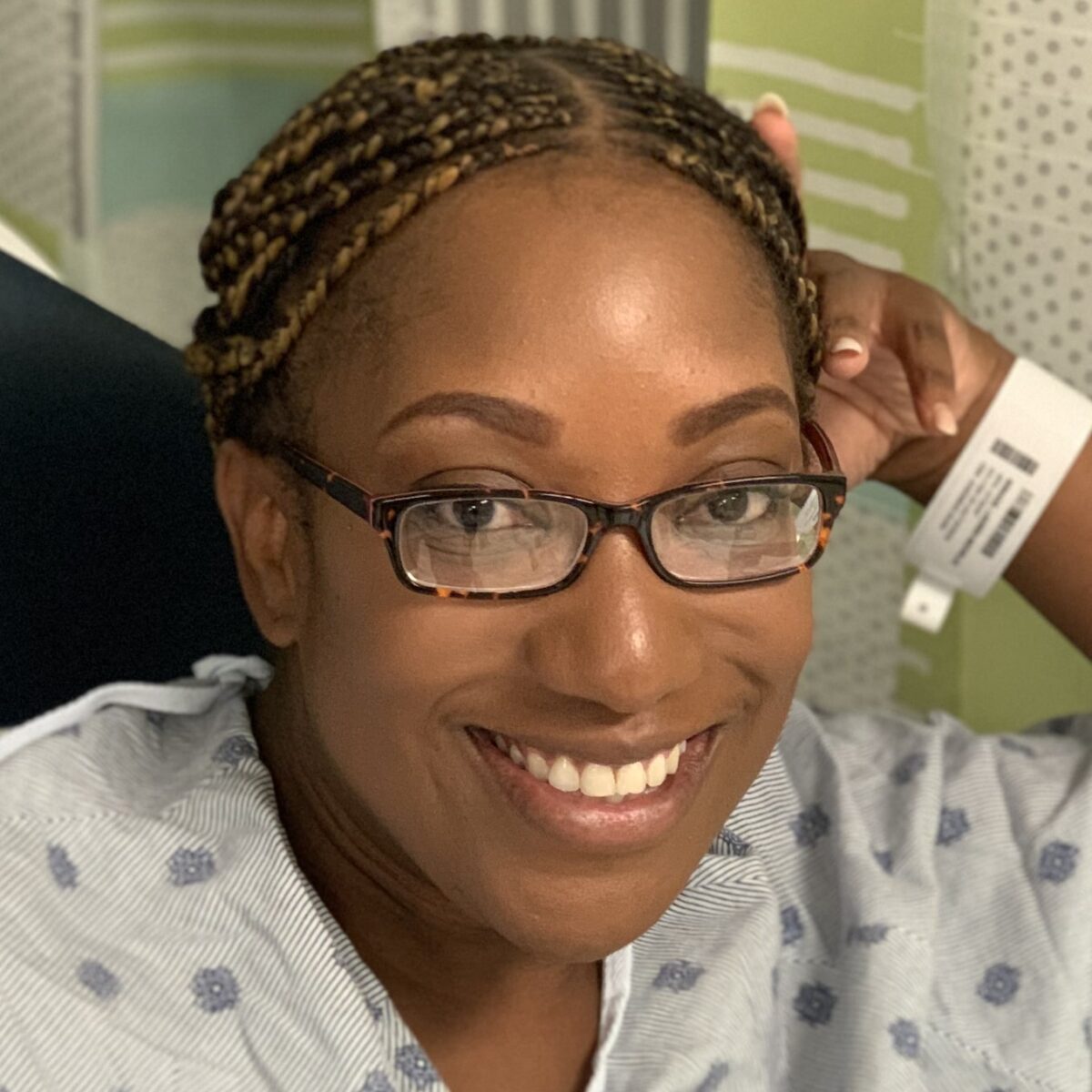Radiation Therapy FAQ and Patient Stories
Radiation therapy, also known as radiotherapy, uses high doses of radiation to destroy cancer cells and to shrink tumors.
Below, find answers to popular radiation therapy questions and experiences of radiation therapy shared by The Patient Story community.

How does radiation therapy work?
Radiation therapy in high doses destroys or slows down the growth of cancer cells through damaging the cells’ DNA. When the DNA is damaged enough, the cells will stop dividing and die. The body then breaks down and removes those damaged cells.
This process usually takes days or weeks of radiation therapy treatment before the cancer cells suffer enough damage. They continue to die for weeks, sometimes months, after the radiation therapy ends.
The actual process of radiation is pretty short. For the radiation therapy treatment, most of the appointment is usually spent positioning the body correctly.
Types of radiation therapy
Your medical team will decide what kind of radiation therapy to give you based on multiple factors, including:
- Cancer type
- Tumor size and location
- How close the tumor is to normal cells and tissue
- Other cancer treatments you’ll be undergoing
- General health history
- Age
- Other medical conditions
You can break radiation therapy down into two main types:
- External beam:
- 3-dimensional conformal radiation therapy (3D-CRT)
- Intensity-modulated radiation therapy (IMRT)
- Stereotactic body radiation therapy (SBRT) or stereotactic ablative radiation therapy (SABR)
- Internal radiation
External beam radiation therapy (EBRT)
- Commonly treated cancers: Many types
- Process: Most common type of radiation therapy. It’s delivered with machines (linear accelerators) that move around the outside of the body without touching it, which means you should not feel anything or any pain during the treatment.
- Post-therapy: You will be able to be around other people safely after the radiation therapy, as it does not make the patient radioactive.
- Types of EBRT
- 3-dimensional conformal radiation therapy (3D-CRT): 3D images created by either computed tomography (CT) or magnetic resonance imaging (MRI) provide physicians a better picture of targeting the tumor
- Intensity-modulated radiation therapy (IMRT): This is similar to the 3D method but with IMRT, the doctor can adjust levels of radiation in each beam. This is meant to help reduce side effects by targeting cancer cells and avoiding normal cells.
- Stereotactic body radiation therapy (SBRT) or stereotactic ablative radiation therapy (SABR): This treatment is thought to be more powerful in destroying cancer cells. If you get this radiation method, you should get it in five or fever treatments.
Internal radiation (Brachytherapy)
- Commonly treated cancers: Head and neck, breast, cervix, prostate, and eye
- Process: Less common type of radiation therapy, usually done outpatient. The physician will likely put small applicators or catheters directly into the treatment area to target the radiation right at the cancer. This can help limit the radiation exposure to normal cells. You will get anesthesia or sedation during the procedure, so the appointment will take some hours.
- Post-therapy:The radiation source is either solid or liquid and may emit radiation for a while.
- Types:
- Systemic therapy: Internal radiation therapy that uses a liquid source, allowing treatment to travel in the blood throughout tissues in your body to destroy cancer cells. This can be done through oral pill, IV, or injection. Body fluids like sweat, saliva, and urine will emit radiation for a while.
- Common types are radioactive iodine pill for thyroid cancer and targeted radionuclide therapy, to treat advanced prostate cancer or gastroenteropancreatic neuroendocrine tumor (GEP-NET).
- Systemic therapy: Internal radiation therapy that uses a liquid source, allowing treatment to travel in the blood throughout tissues in your body to destroy cancer cells. This can be done through oral pill, IV, or injection. Body fluids like sweat, saliva, and urine will emit radiation for a while.
How does radiation work alongside other treatments?
Radiation therapy is sometimes given alone, but mor often than not, there will be other treatments given before, during, or after the radiation.
- Radiation before surgery: Radiation can shrink the size of the tumors and cancer to improve the chances of success for surgical removal.
- Radiation during surgery: Known as “intraoperative radiation,” this radiation is applied directly to the cancer without having to go through the skin.
- Radiation after surgery: To destroy any cancer cells that might remain.
Hear from a radiation oncologist

Hear from radiation oncologist, Dr. Kenneth Biehl.
Radiation therapy stories and experiences
Here are different experiences with radiation therapy, as told by our TPS community members.
External beam radiation therapy (EBRT)
Jessenia L., rectal cancer
Symptoms: Constipation, belatedness, bleeding after using the toilet
Treatment:Chemotherapy (including oral chemotherapy), surgery (full hysterectomy), radiation
...
Madison C., melanoma
Symptoms: Abnormal mole on arm when she was 18 (misdiagnosed); Hard lump on upper left arm
Treatment:Surgery (excision at primary and metastatic site); Dual-agent immunotherapy (Opdivo and Yervoy ); Radiation (pending)
...
Lauren B., breast and colon cancer
Symptoms: Lump in left breast that grew; strange appearance of nipple
Treatment:Surgery, chemotherapy, radiation therapy, hormone therapy, complementary treatments
...
Madison G., Hodgkin’s lymphoma
Symptom: Swollen lymph node in neck that grew larger and became painful
Treatment:Chemotherapy (ABVE-PC); Radiation therapy (proton therapy)
...
Dee D., Metastatic Breast Cancer, IDC & DCIS, ER+
Symptoms: Inability to produce milk on the left breast while breastfeeding, breast pain (palpable and radiating to the back), lumps in the breast and armpit
Treatments: Chemotherapy (AC-T), surgery (bilateral mastectomy & axillary lymph node clearance), radiotherapy, hormone therapy (Zoladex/goserelin), aromatase inhibitor (letrozole), targeted therapy (Kisqali/ribociclib)
...
Intensity Modulated Radiation Therapy (IMRT)
Heidi N., Non-Small Cell Lung Cancer, Stage 3A
Symptoms: None; unrelated chest CT scan revealed lung mass & enlarged mediastinal lymph nodes
Treatment: Chemoradiation
...
Steve R., Prostate Cancer, Gleason 6, Stage 2-4
Cancer Details: Started at stage 2 and gradually progressed to stage 3, and then to stage 4 with metastasis to lymph nodes
1st Symptoms: Rising PSA score
Treatment: IMRT (radiation therapy), brachytherapy, surgery, and lutetium-177
...
Brachytherapy
McKenzie E., Cervical Cancer, Stage 3C2
Symptoms: Severe abdominal & back cramping, persistent & extreme pain, heavy discharge & bleeding
Treatments: Radiation, chemotherapy (cisplatin), brachytherapy, immunotherapy (Keytruda)
...
Margie W., Stage 1B, Grade 3
Symptoms: Persistent irregular bleeding
Treatments: Surgery, chemotherapy, brachytherapy
...
Treatment: Chemotherapy, radiotherapy, brachytherapy, hormone therapy...
Steve R., Prostate Cancer, Gleason 6, Stage 2-4
Cancer Details: Started at stage 2 and gradually progressed to stage 3, and then to stage 4 with metastasis to lymph nodes
1st Symptoms: Rising PSA score
Treatment: IMRT (radiation therapy), brachytherapy, surgery, and lutetium-177
...
Marissa N., Squamous Cell Cervical Cancer, Stage 3B
Symptoms: Excessive and prolonged vaginal bleeding
Treatment: Chemotherapy (cisplatin), radiation, brachytherapy
...
Lutetium-177
Steve R., Prostate Cancer, Gleason 6, Stage 2-4
Cancer Details: Started at stage 2 and gradually progressed to stage 3, and then to stage 4 with metastasis to lymph nodes
1st Symptoms: Rising PSA score
Treatment: IMRT (radiation therapy), brachytherapy, surgery, and lutetium-177
...
References:
- www.cancer.gov/about-cancer/treatment/types/radiation-therapy
- www.stanfordhealthcare.org/medical-treatments/r/radiation-therapy/about-this-treatment/types.html











